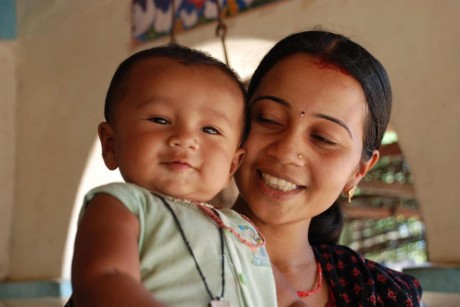This originally appeared on the Stanford Social Innovation Review.
Sad examples abound of inexpensive, lifesaving health solutions failing to reach the most vulnerable in the developing world. Whether it is amoxicillin treatment that is out of reach for the 1.3 million children under five who die each year from childhood pneumonia, or a simple and effective $0.50 oral rehydration salts or Zinc treatment inaccessible to the 1.5 million kids dying each year from dehydration stemming from diarrhea, it is clear that new solutions and approaches are needed. Given this reality, global health practitioners are recognizing the need to look beyond their traditional operating models and seek new solutions to reach the world’s most vulnerable.
At the same time, the private sector, faced with slowing economies in the US and Europe, is increasing investment and experimentation in the more challenging emerging markets as a source for new growth. These firms—whether they are medical device, pharmaceutical, or consumer-packaged goods companies—stand to learn much from global health and development practitioners who have operated at the bottom of the pyramid for years. Similarly, global health practitioners can learn much from these private sector efforts by, for example, better leveraging the rigor and well-defined processes involved in designing, introducing, and scaling products. Given the increasingly aligned incentives, the time is right for more effective and consistent collaboration between these two groups.

A child peers around the corner in the waiting room of the HIV Comprehensive Care Clinic of Meru District Hospital in Kenya’s Eastern province as two pediatricians stand in the background. Photo credit: Mia Collis, Elizabeth Glaser Pediatric AIDS Foundation
The Center for Accelerating Innovation and Impact in USAID’s Global Health Bureau launched last year with these shared incentives in mind; it aims to promote and reinforce innovative, business-minded approaches to bottlenecks in global health. An important piece of this strategy is bringing together thought leaders and frontline practitioners from both the public and private sectors to share proven and tested practices, and then collaboratively develop new global health models.
IDEO’s work developing products and services in India and Africa, for example, has demonstrated an important relevant learning for the global health community and private sector alike: innovation needs to be holistic and strategic. It’s about evaluating and targeting specific gaps in the surrounding ecosystem, with a square focus on empathizing with all stakeholders. While new technologies and products are needed, often times re-evaluating (or evaluating for the first time) the true bottlenecks in the health ecosystem can uncover new opportunities for innovation in training and education, operating/business model design, demand generation, behavior change, and other areas.
An example: In Africa, IDEO worked on a project to develop a low-cost toilet but quickly realized that developing the toilet itself wasn’t enough. To be practical and to succeed, it had to be designed for the unique constraints that existed there, including the lack of centralized plumbing. As such, IDEO designed a system with a separate container to trap the waste. Most importantly, though, the toilets, instead of being sold directly to customers, are instead sold to franchisees that then rent the toilets to customers. The rental fee covers not only the toilet but also a fee to collect and dispose of the waste properly. This way everyone wins. Customers pay a lower amount per month rather than an expensive, one-time, fixed fee. Franchisees earn an attractive return on their investment, and the system ensures that waste is removed and disposed of properly—not on some street corner where it becomes a public nuisance and health hazard. Above all, the incentives are aligned to make the system sustainable.
Another often cited yet supremely relevant example is Jaipur Foot in India. Founded in 1975, Jaipur Foot has fitted more than 40,000 Indians with leg prostheses. To reach such massive numbers, in addition to innovating on a low-cost “product” (in this case, a $45 artificial lower limb), the organization developed an entirely new operating model. It has flipped the traditional healthcare service model on its head, and it now takes diagnoses and treatment to the patient. The organization regularly organizes health camps outside of its centers in more rural locations—where most Indians live—to help patients who have financial and physical difficulty traveling to larger cities. Jaipur Foot sends everything required for treatment to the camps, including doctors, assistants, and equipment. They can even fabricate, fit, and deliver limbs on the spot.
These are just two of a growing number of examples that both global health and private sector practitioners can learn from and collaboratively put into practice. USAID’s new Center for Accelerating Innovation and Impact hopes to enable this best practice sharing as one avenue to more efficiently and effectively deliver healthcare to those at the bottom of the pyramid.
Dheeraj Batra is head of business design at IDEO Mumbai. Over the last three years, Dheeraj has worked extensively in the medical device industry in India having spent the majority of that time incubating businesses and piloting new initiatives for some of the largest companies in the sector. He was a key architect and led the on-the-ground implementation for Healthy Heart for All, a nationwide initiative by Medtronic in India.
David Milestone is senior advisor at USAID, Center for Accelerating Innovation and Impact. In this role, David leads the Market Access team in the development and implementation of market-based strategies to accelerate the adoption of priority health solutions. Prior to joining USAID, David held various strategic marketing roles at Stryker, including innovation and strategy initiatives in India.







